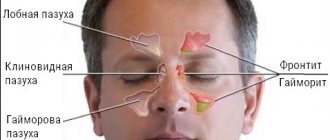Odontogenic sinusitis is an inflammatory process of an atypical nature. Its progression is caused not by the development of influenza or ARVI, but by various diseases of the upper dentition. This is due to the close anatomical proximity of the roots of the teeth to the maxillary sinus. This disorder can be caused by damage to teeth such as the first and second molars, as well as the second premolar. The disease has both acute and chronic course. Next, we will consider what it is, what are the differences between the acute and chronic forms, as well as what treatment is prescribed.
About odontogenic sinusitis
Odontogenic sinusitis is an inflammation of the mucous membrane of the maxillary sinus, caused by the spread of the pathological process from the primary source of infection located in the upper jaw. The main manifestations of the disease are a pronounced headache, which intensifies when the head is tilted, nasal discharge of a purulent or serous nature, lacrimation, and intoxication syndrome.
This phenomenon is not considered normal and aggravates the disease: in case of a dental problem, the mucous membrane of the sinus is involved; in case of sinusitis, the root system of the teeth is involved in the pathological process. Odontogenic sinusitis can be left-sided, right-sided or bilateral. The disease is unpleasant and, if not treated promptly, leads to serious consequences.










